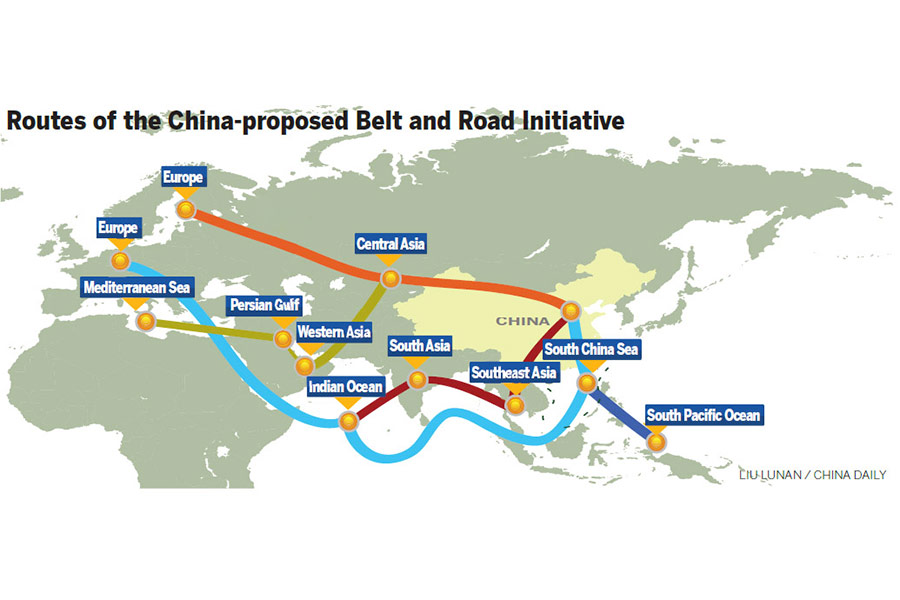


More than 70 countries and international organizations are taking part in China's Belt and Road (B&R) investment projects, formally known as the Silk Road Economic Belt connecting China with Europe through Central and Western Asia by inland routes, and the 21st-Century Maritime Silk Road from China to Europe via sea routes through Asia and Africa.
These modern replicas of ancient trading trails are linking up more than half of humanity and account for nearly half of the global output of goods and services. They are also big business for China.
Last year, China's direct investments in 49 countries on the B&R corridors rose 18.2 percent to US$14.8 billion, and the total value of business contracts amounted to US$92.6 billion. All that was overshadowed by more than US$1 trillion of China's trade transactions (representing about 25 percent of the China's US$1 trillion in Silk Road trade is just a start!
But that's only the beginning, according to China's President Xi Jinping . In a speech at Uzbekistan's Parliament on June 22, 2016, he announced that big B&R projects have been finalized and will be coming on stream in the months and years ahead.
Some 600 Chinese companies are currently working in Uzbekistan on 70 joint-venture projects in infrastructure and energy, partly financed by China's $6.5 billion of direct investments and bank loans. One of these major projects is a recently completed 19.2 km Qamchiq railway tunnel built by a Chinese company and inaugurated during Mr. Xi's visit. The total value of 31 Sino-Uzbek business contracts currently in the process of implementation is estimated at $15.5 billion. And the two countries' close and growing economic ties have pushed the bilateral trade over the last ten years from $670 million to $3.5 billion in 2015.
China is opening up to the world with huge B&R investment projects designed to provide stable supplies of energy and raw materials for its economy, to increase trade access to global markets and to facilitate the acquisition of best-practice technologies. A rapid restructuring and modernization of China's industries is accompanied by big strides in education, scientific research and social welfare.
It is pointless to fret about decimal points in China's growth rates. If you follow that fashion, you will end up like that famous investment guru who was amazed to learn last week that China was "the strongest region" for the Carnival Cruise Line and a "leading growth market" for Nike (NYSE: NKE), with "a 44 percent increase in direct-to-customer sales."
You can view the full story here: http://www.cnbc.com/